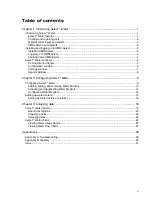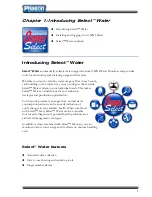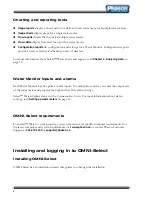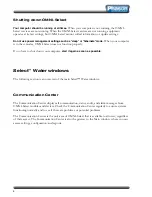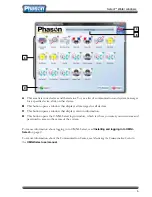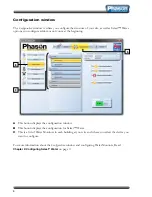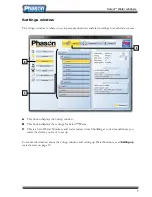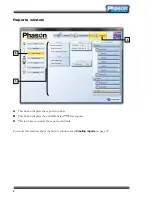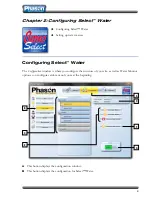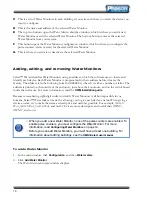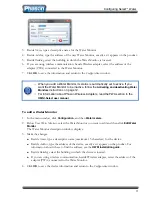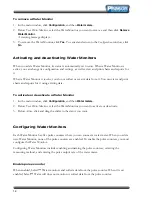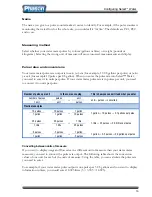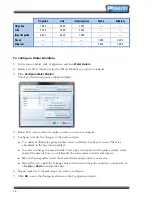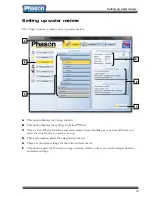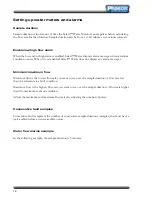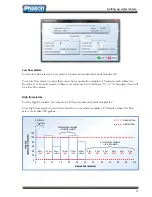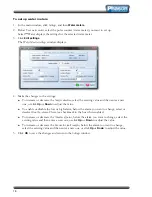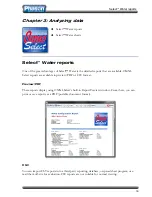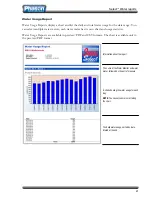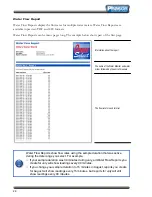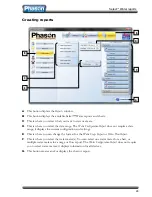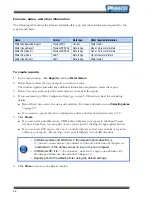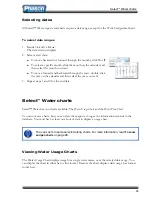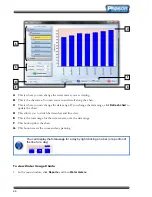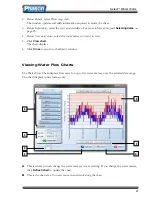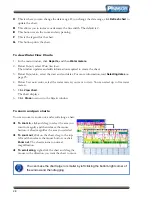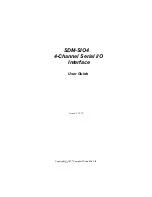
Configuring Select™ Water
13
Name
The name you give to a pulse counter makes it easier to identify. For example, if the pulse counter is
monitoring the water flow for the whole site, you could call it ‘
Site flow
’. The defaults are PC1, PC2,
and so on.
Measuring method
Select whether your water meter pulses by volume (gallons or litres) or weight (pounds or
kilograms). Selecting the wrong unit of measure will cause incorrect measurements and display.
Pulse rates and conversions
Your water meter pulse rate output is in
units per pulse
(for example, 10 US gallons per pulse) or
pulses
per unit
(for example 10 pulses per US gallon). When you enter the pulse rate into Select™ Water,
you need to enter it in units per pulse. If your water meter pulse rate is in pulses per unit, you need
to convert it to units per pulse.
Number of pulses per unit
Is the same as saying
This is how you convert it and what you enter
number of pulses
pulses
=
unit
unit ÷ pulses = converted
1 unit
unit
pulses
Practical examples
10 pulses
10 pulses
=
1 gallon
1 gallon ÷ 10 pulses = 0.1 gallons per pulse
1 gallon
1 gallon
10 pulses
25 pulses
25 pulses
=
1 litre
1 litre ÷ 25 pulses = 0.04 litres per pulse
1 litre
1 litre
25 pulses
.5 pulses
.5 pulses
=
1 gallon
1 gallon ÷ 0.5 pulses = 2.0 gallons per pulse
1 gallon
1 gallon
.5 pulses
Converting between units of measure
If you want to display usage and flow rates in a different unit of measure than your water meter
measures, you need to convert the pulse rate output. The following table shows the conversion
values of one unit for each of the units of measure. Using the table, you can calculate the pulse rate
you need to enter.
For example, if your water meter pulse output is one pulse per 5 US gallons and you want to display
information in liters, you would enter 18.925 litres (5 × 3.785 = 18.925).

